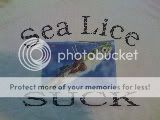http://www.marineharvestcanada.com/pdf/sea_lice/19_05_09_Larsen.pdf
DATE 9-May-09
# of fish 60 sampled out of 1,135,054
Is it just me or did they really only sample .00005286092 of the total fish in the pen REALLY WOW that is AWESOME
ADULT FEMALE(with eggs)= 0.02 = 22,701.08 lice x Say (100) Just for the lowest number would be hmmmm 2,270,108 new lice
FEMALE (w/o eggs)=0.05 x 1,135,054 = 56,752.70 lice if they don't have eggs they will or did Correct? if the did already hatch eggs or are going to that would be (again low numbers) 56752.70 X 100= 5,675,270
other facts
# Reproduction:
* Male locate on anterior, dorsal site of fish; fertilized females locate primarily behind adipose and anal fins,
One mating fertilizes several egg sacs,
* Egg sacs are chain of fertilized eggs; larvae develop inside the egg sac; even if egg sac is removed; fully developed egg sacs with ready to hatch larvae are dark brown,
* 6 sets of egg sacs can be produced by one female in 50 days at 14oC; oviducts are filled with eggs while egg sacs are still attached,
* no. of eggs per egg sac is related to length of egg sac; egg sac of wild salmon are often longer and contain more eggs, egg sac length increases in late fall, early winter.
# Life cycle:
* Time from extrusion of egg sacs to eclosion (hatching): 5.5 to 40 days, depending on the temperature (shortest time at warmer temperature); L. salmonis 10-12 days at 11.5oC; C. elongatus 8 days at 10oC;
* 2 nauplii stages; non-feeding, positive phototactic; nauplii I 9 -52 hours; nauplii II 17 - 35.6 hours depending on water T (5 - 15oC);
* 1 free-living copepodid stage attaches to fish and becomes parasitic; actively positively phototactic;
* infection rate of fish kept at 0 - 4 m depth is 40 higher than fish kept at greater depth,
* attachment of copepodids affected by light, salinity, hydrodynamic factors
* 4 attached chalimus stages; *** differentiation in chalimus IV
* generation time (from nauplii I to gravid female): at 9 -12oC about 40 (males)-52 (females) days.
* Survival:
* adult sea lice survive up to 22 days off the host,
* copepodids remain infective for 4-6 days at 15oC,
* life span in freshwater: 21 days; have been seen on migrating salmon 70 km inland;
* life span on host in seawater 75 days at 9- 10oC; 191 days at 7.4oC; C. elongatus survived 260 days on arctic char,
* nauplii survive best in sea water; copepodids at 15‰; survival of copepodids is higher at 15oC than at 5oC;
* eggs survive and hatch at 15‰ but survival of nauplii is nil; complete development only at #8805;30‰
# Pathological effects on salmonids
* copepodids cause local reaction visible as small black spot; feeding activity of chalimus causes small local erosion; more extensive erosions are caused on the dorsal fin of sea trout,
* adults graze with an non-selective rasping apparatus; there is no evidence of secretions,
* pathogenic effect increases with the size, mobility and number of the parasites,
* L. salmonis causes more damage than C. elongatus,
* Lesions are can be most severe in head region, with deep erosion occurring,
* Plasma sodium and cortisol (stress level) increase, hematocrit, lymphocytes and plasma protein levels decrease;
* Non-specific, innate resistance in coho. Higher resistance is associated with protease activity in mucus (serine and metalloprotease).
* limited cellular and humoral immune response. Immunity, induced experimentally by antibodies to lice gut antigen, reduced fecundity of females but does not prevent infection.
* Injection with cortisol increased resistance in smolt,
* it has been suggested that sea lice can transmit furunculosis, vibriosis, infectious salmon anemia virus, bacterial kidney disease,
* sea lice infestations increase stress and susceptibility to other diseases; cause starvation, reduce growth, cause mortality, reduce carcass quality, increase secondary infections (cold water sores) and cause expenses for treatments.








